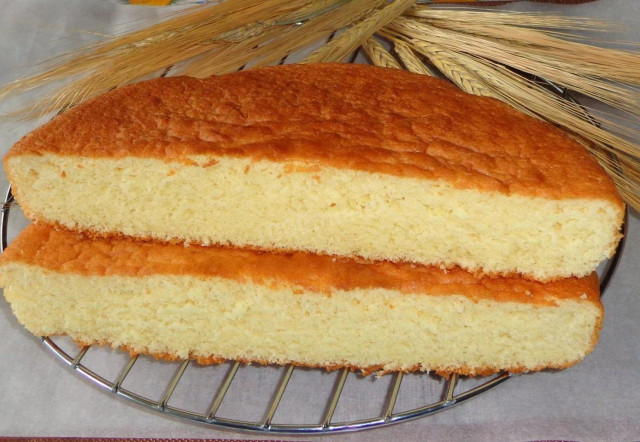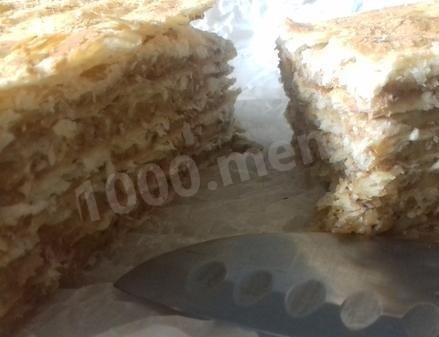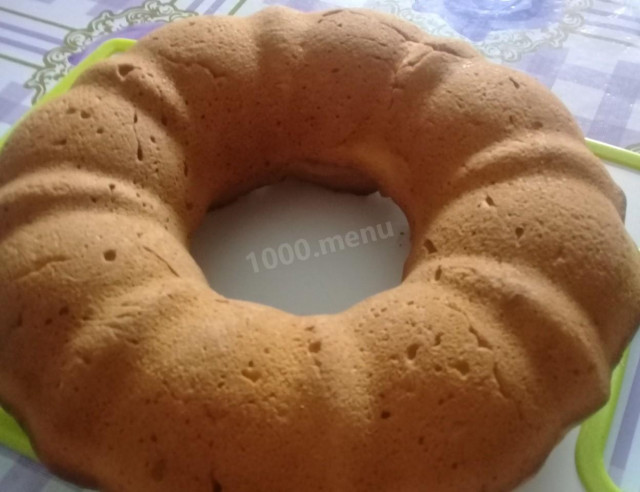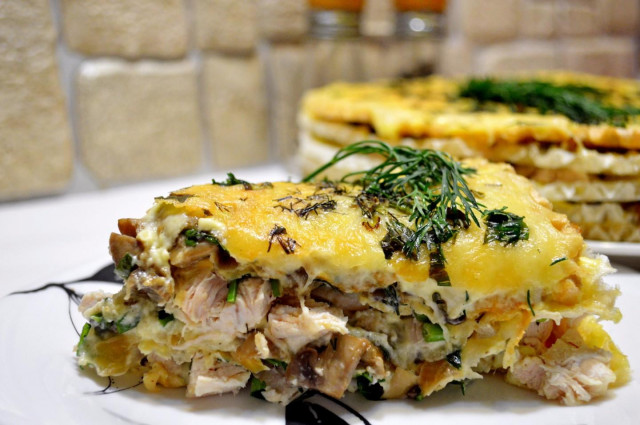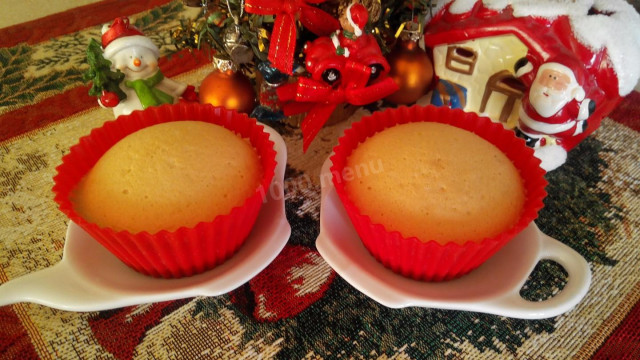Composition / ingredients
Step-by-step cooking
Step 1:
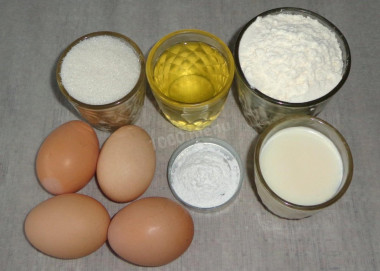
Measure out all the necessary products listed in the recipe. You will need four large eggs, wheat flour of the highest grade, milk of any fat content.
Step 2:
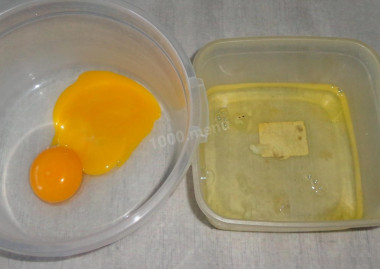
Carefully separate the whites from the yolks. It is important that not a drop of yolk gets to the whites, otherwise they will climb badly. You will need 4 whites and 2 yolks. The remaining yolks can be used to make custard or used to make another dish.
Step 3:
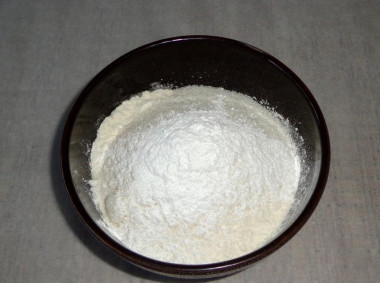
Sift the flour into a bowl. Add 80 grams of sugar and baking powder to it. Mix it up. Since the properties of flour may differ, it may need more or less. Focus on the desired creamy consistency of the dough.
Step 4:
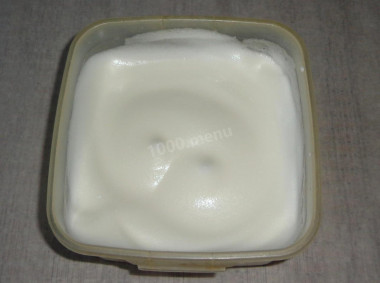
How to beat the proteins correctly? Eggs should be fresh and well chilled (from the refrigerator). Dishes for whipping should be dry, fat-free. Beat with a mixer at low speed. Do not use an aluminum container, as the proteins in it will turn green. Add sugar in parts, while not stopping the whipping process. When the sugar crystals are completely dissolved, increase the speed and beat to a thick, stable foam.
Step 5:
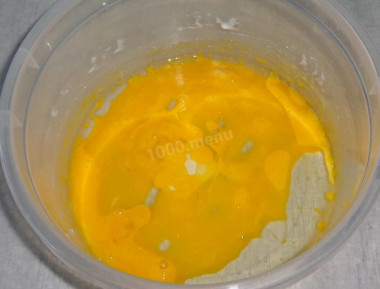
In a separate container, whisk the yolks with refined vegetable oil until smooth.
Step 6:
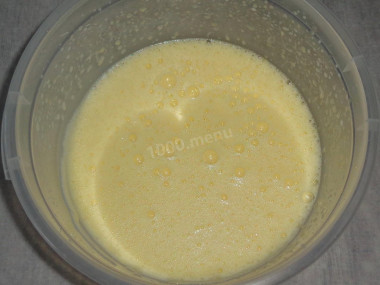
Pour warm milk to the yolks (up to 40 degrees). Beat with a mixer so that bubbles appear on the surface. Milk can be replaced with water (filtered).
Step 7:
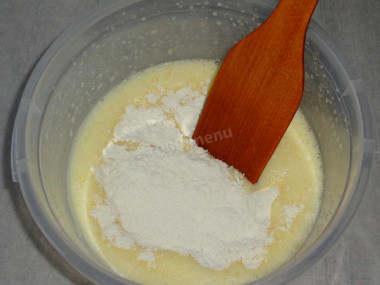
Pour in the sifted flour. Mix thoroughly with a silicone spatula until smooth. Stir. The dough turns out smooth, without lumps, creamy, medium-thick, with a spatula or spoon should drain with a wide ribbon.
Step 8:
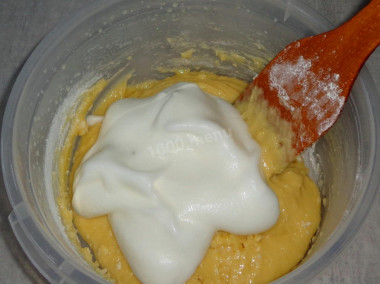
Now add the whipped whites. Stir the dough. Stir gently in one direction from top to bottom so that the proteins do not settle.
Step 9:
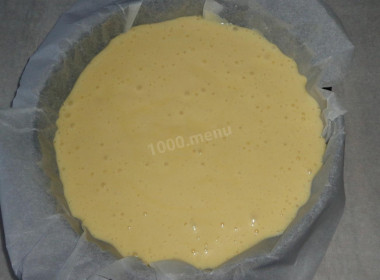
Cover the round heat-resistant form (preferably split) with oiled parchment paper. There is no need to lubricate anything. Pour out the dough. Take a form of a small diameter (18-20 cm), the height of the biscuit will depend on it. The smaller the size of the mold, the higher the cake will turn out. Preheat the oven to 180 degrees in advance (10-15 minutes before cooking).
Step 10:
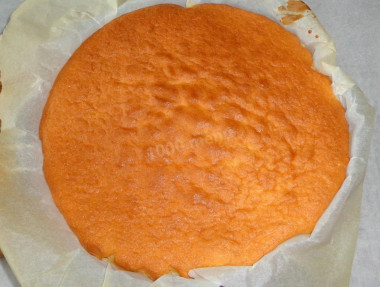
Bake the sponge cake for about 25-30 minutes. Ovens are baked in different ways, so the baking time and temperature may differ from those indicated. Consider the specifics of your technique. It is important not to open the oven doors for the first 15 minutes so that the biscuit does not fall off. How to check the readiness of baking? Lightly press it with your finger from above, the finished biscuit will spring. Also pierce the pie with a wooden skewer, if it came out dry, then it's ready.
Step 11:
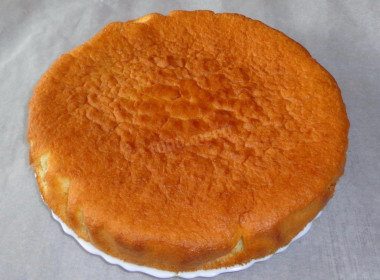
Remove the biscuit from the oven in the form. Let it cool completely. Swipe the knife along the edge of the mold, take out and transfer the pastries to a dish, do not forget to remove the parchment. Before serving, you can sprinkle it with powdered sugar. Serve with tea. Bon appetit!
Thanks to the vegetable oil and milk in the composition, the biscuit turns out moist, soft and tender. It's delicious even without impregnation.
Sponge cake can be cut into 2-3 cakes and smeared with sour cream, custard or any other cream.
The cooled biscuit can be wrapped in plastic wrap and left overnight in the refrigerator. The next day it will become more elastic and will crumble less.
Also a biscuit wrapped in plastic wrap can be frozen. The shelf life is 3-4 months at a temperature of -18 degrees. It is defrosted on the bottom shelf of the refrigerator.
Be prepared for the fact that flour may need a little more or, conversely, less than indicated in the recipe. You need to focus on how the dough should turn out as a result (dense, soft, liquid, etc.). There is a lot of useful information about why flour, even of the same variety, can have completely different properties, read this article
Keep in mind that everyone's ovens are different. The temperature and cooking time may differ from those specified in the recipe. To make any baked dish successful, use useful information in the article about ovens here
Caloric content of the products possible in the composition of the dish
- Whole cow's milk - 68 kcal/100g
- Milk 3.5% fat content - 64 kcal/100g
- Milk 3.2% fat content - 60 kcal/100g
- Milk 1.5% fat content - 47 kcal/100g
- Concentrated milk 7.5% fat content - 140 kcal/100g
- Milk 2.5% fat content - 54 kcal/100g
- Granulated sugar - 398 kcal/100g
- Sugar - 398 kcal/100g
- Vegetable oil - 873 kcal/100g
- Wheat flour - 325 kcal/100g
- Baking powder - 79 kcal/100g
- Chicken egg - 80 kcal/100g

